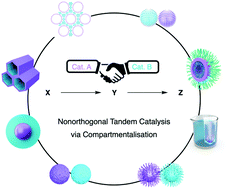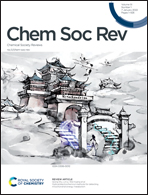Compartmentalisation of molecular catalysts for nonorthogonal tandem catalysis
Abstract
The development of nonorthogonal tandem catalysis enables the use of a combination of arbitrary catalysts to rapidly synthesize complex products in a substainable, efficient, and timely manner. The key is to compartmentalise the molecular catalysts, thereby overcoming inherent incompatibilities between individual catalysts or reaction conditions. This tutorial review analyses the development of the past two decades in the field of nonorthogonal tandem catalysis with an emphasis on compartmentalisation strategies. We highlight design principles of functional materials for compartmentalisation and suggest future directions in the field of nonorthogonal tandem catalysis.



 Please wait while we load your content...
Please wait while we load your content...